The last time we saw a similar drop in crypto market cap was in early July when Germany began selling off BTC. This time, the catalyst came from Web2, specifically the stock market.
Here's everything you need to know, plus my expectations for when the stock market opens again on Monday.
Stock Market, Interest Rates, and Unemployment
First, let me explain some of the fundamental factors that play a key role in the global economy and directly affect the stock and cryptocurrency markets.
Rate Cuts: When interest rates fall, companies can borrow money at a lower cost and reinvest their earnings more efficiently. This is seen as a positive sign for the stock market because the economic environment becomes more favorable.
Now, let’s dive into the current drama.
July 31: Jerome Powell announced that if the US economy develops as expected, interest rates could be cut as early as September. This rate cut is already priced into stock prices, which is clearly a positive catalyst for the stock market rally over the past few months.
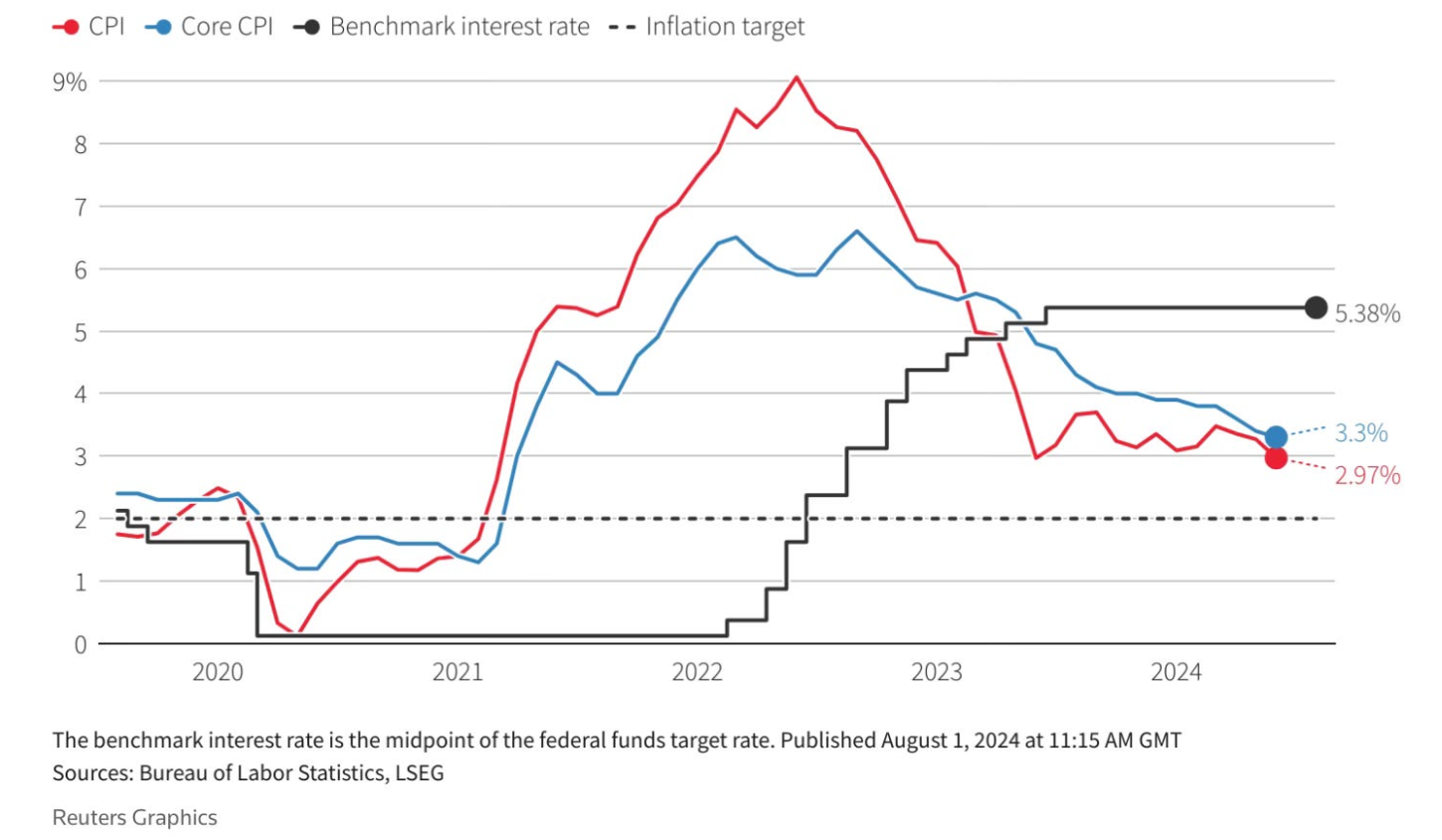
On August 2, the U.S. Department of Labor released an employment report showing that the U.S. unemployment rate jumped to 4.3% in July, close to the highest level in three years.
The rate hike increases the odds of an imminent rate cut — the sooner the better — but also brings a different message to the U.S. economy: Unemployment is increasing at a higher rate than expected.
unemployment rate:
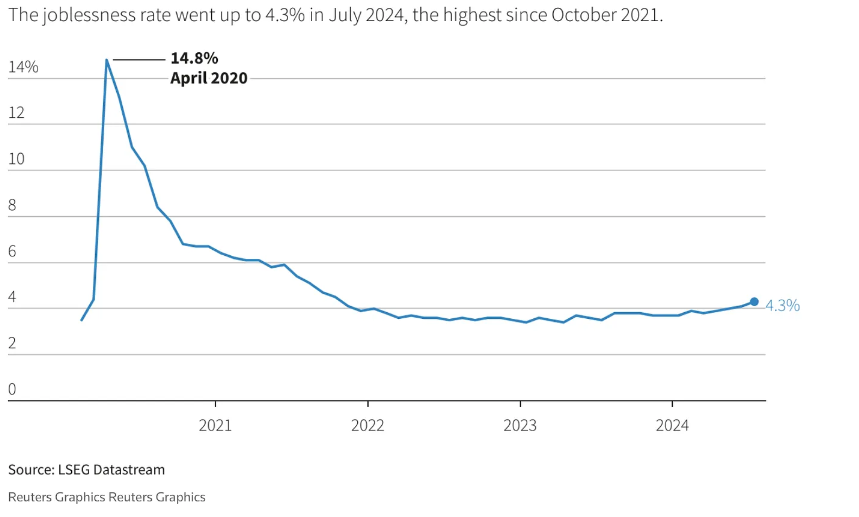
In June, U.S. central bank policymakers projected just one rate cut this year and expected unemployment to reach 4% by the end of the year. However, given the current situation, multiple rate cuts are possible.
You might argue, “Rate cuts are a good thing—that’s exactly what you’re saying.”
Yes, but the unemployment rate is the more critical potential bearish catalyst. The rise in the unemployment rate in July set off the so-called Sam's Rule, a historically accurate early indicator of recessions.
Sam's rule is triggered
The Sam rule, developed by former Federal Reserve economist Claudia Sam, has in the past suggested that a recession has begun when the three-month moving average of the national unemployment rate rises 0.50 percentage points from the prior 12-month low. That level was breached when the unemployment rate rose to 4.3% in July, though Sam herself has questioned whether the rule should apply in the current context given the labor market distortions created by the COVID-19 pandemic and recovery.
Sam's Rule Recession Indicator:
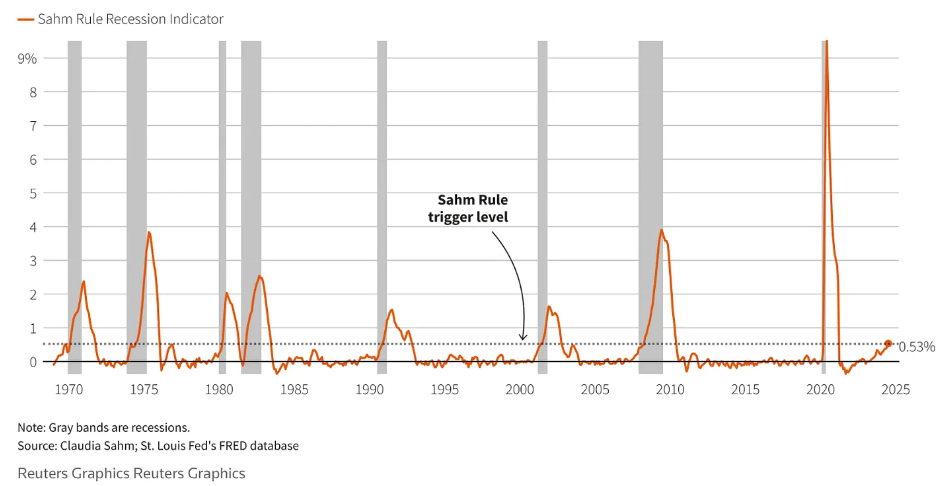
What happened next? A wave of panic selling.
details make a difference
As media headlines often do, the focus of the story (often exaggerated) appears first, with more background information revealed near the end, but the end is the least read.
First, a note on Hurricane Beryl . The household survey showed that 436,000 people reported they were unable to work due to severe weather last month, the highest number ever for July. In addition, 249,000 people were temporarily laid off.
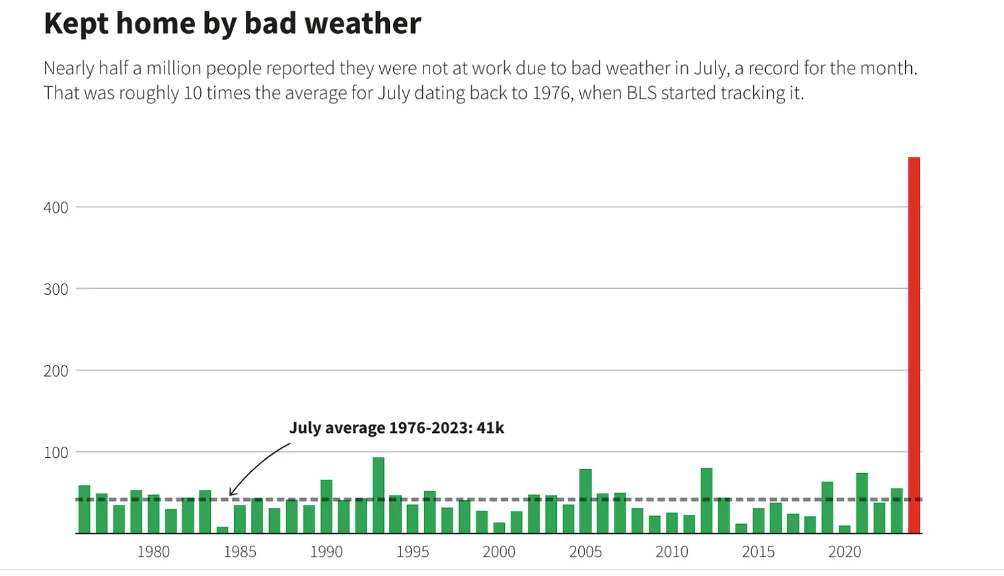
Second, consider immigration . About 420,000 people entered the labor force last month, while household employment increased by only 67,000. The number of people working part-time for economic reasons increased by 346,000 to 4.6 million. However, the number of permanently unemployed and long-term unemployed people was almost unchanged.
Claudia Sahm, an economist who formerly worked at the Federal Reserve and the creator of the Sahm Rule, warned against taking too strong a signal from her rule.
You can read the original jobs report here .
Long story short, recession fears are probably overblown — but weaknesses do exist and need to be addressed.
Japan raises interest rates
The second catalyst for the global repricing was the Bank of Japan’s hike in its interest rate target to 0.25% – the highest level since 2008.
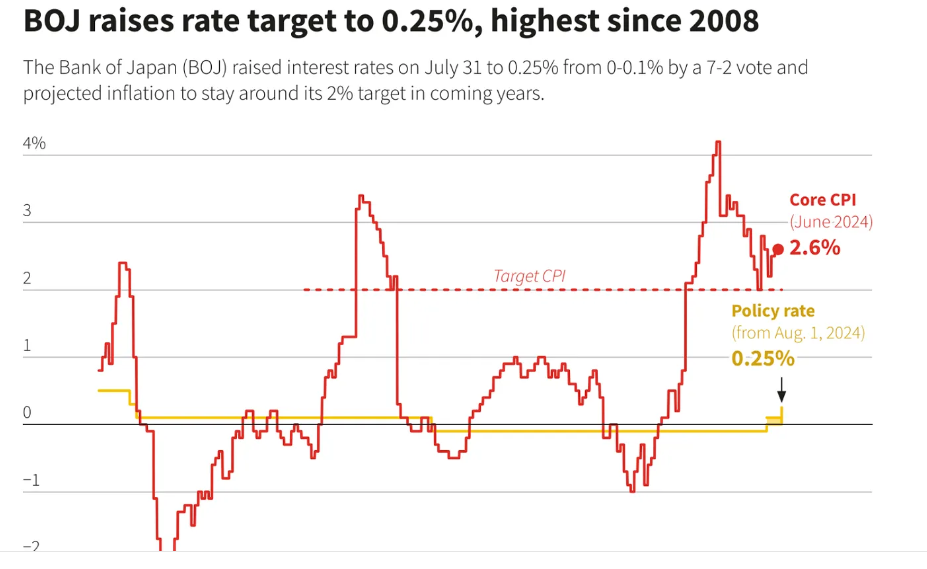
During periods of negative interest rates, many Japanese investors borrow yen at low rates to buy higher-yielding U.S. Treasuries, a practice often referred to as the "carry trade." However, as the Bank of Japan raises rates, that trade becomes less effective and some investors may bring that money back home.
Panic is poison
Whatever the reason, the next jobs report and further action from the FOMC on rate cuts will play a fundamental role in market pricing.
- The stock market reacted immediately to the news.
- The dollar fell to its lowest in four months against a basket of currencies.
- U.S. Treasury prices rose, with the benchmark 10-year note yield falling to its lowest level since December.
- The CBOE Volatility Index, a gauge of expected futures prices, rose to its highest level since April.
- Japan's Nikkei index also fell nearly 5%, its biggest one-day drop since 2022.
Naturally, the turmoil impacted the cryptocurrency market, leading to a series of long-term liquidations.

Source: CoinGlass Total Liquidations Chart
What’s next ?
Volatility expected on Monday
Unlike stocks, cryptocurrencies are traded 24/7. In my opinion, it is likely that the stock market will continue to fall on Monday, which will drag the cryptocurrency market lower. Next week's announcement will play a fundamental role in curbing panic, but it will not have an immediate effect.
Further Actions
Another catalyst that cannot be ignored is the US election. The US will strive to keep its economy attractive, so medium-term stock market volatility may be suppressed.
Cryptocurrency Market
When it comes to further crypto trends, I tend to agree with Revelo Intel’s expectations rather than the bullish thesis so prevalent on 𝕏. Hope is not the best investment strategy.
- New high FDV tokens (such as Monad, Berachain, Scroll, and potentially Linea) will enter the market, diluting the liquidity and trading volume of other tokens in your portfolio.
- Expectations of traction after the halving may be overly optimistic given recession fears and the realities expected to emerge after the U.S. election.
- Social sentiment around cryptocurrencies is also not positive (I’ll publish an in-depth analysis later next week). There is no reason for the average person to rush out and buy Bitcoin in the coming months.
In other words, I personally expect the market to remain flat in August and September. Bitcoin will likely remain in the $60,000 to $65,000 range, while Ethereum will be closer to $3,000. However, this situation can change at any time, and I am basing my conclusions on the facts I have at hand at this time.
I am not a financial advisor and I strongly recommend that you do further research.
However, for the health of your portfolio, it is always better to be pessimistic than optimistic.







